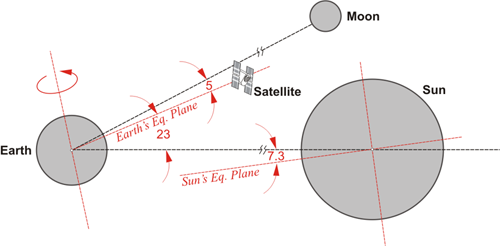
Orbital bias has the potential to be the fourth-largest error. It is addressed in the broadcast ephemeris.
The orbital motion of GPS satellites is not only a result of the earth's gravitational attraction, there are several other forces that act on the satellite. The primary disturbing forces are the non-spherical nature of the earth's gravity (the earth is not equally dense in all its portions), tidal forces, the attractions of the sun and the moon, and solar radiation pressure as the satellite moves from darkness to light. All in all, it is a rather bumpy road for the satellite. The best model of these forces is the actual motion of the satellites themselves, and the government facilities distributed around the world, known collectively as the Control Segment or the Operational Control System (OCS), track them for that reason, among others. The modeling of the orbit by the Control Segment is good, but they can upload the ephemerides only so frequently. There is always a certain amount of age in the ephemerides and that means that the position of the satellite expressed in its ephemeris at the moment of observation cannot be perfect. So orbital bias could be thought of as the error in the broadcast ephemeris.